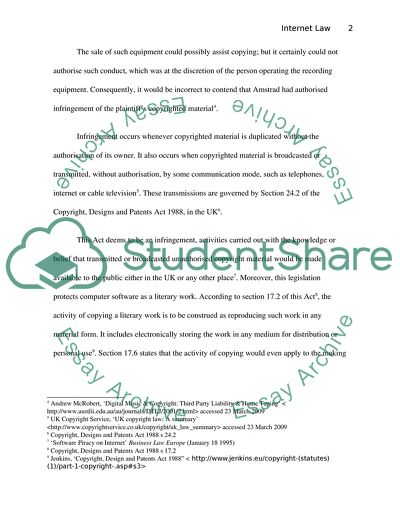Cite this document
(Internet Law and Home Copying Research Paper Example | Topics and Well Written Essays - 3500 words, n.d.)
Internet Law and Home Copying Research Paper Example | Topics and Well Written Essays - 3500 words. Retrieved from https://studentshare.org/law/1721960-internet-law
Internet Law and Home Copying Research Paper Example | Topics and Well Written Essays - 3500 words. Retrieved from https://studentshare.org/law/1721960-internet-law
(Internet Law and Home Copying Research Paper Example | Topics and Well Written Essays - 3500 Words)
Internet Law and Home Copying Research Paper Example | Topics and Well Written Essays - 3500 Words. https://studentshare.org/law/1721960-internet-law.
Internet Law and Home Copying Research Paper Example | Topics and Well Written Essays - 3500 Words. https://studentshare.org/law/1721960-internet-law.
“Internet Law and Home Copying Research Paper Example | Topics and Well Written Essays - 3500 Words”, n.d. https://studentshare.org/law/1721960-internet-law.


